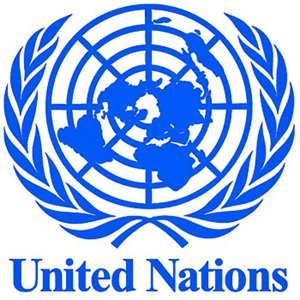
Blog
-
Geiger Readings for Nov 06, 2016
Ambient office = 119 nanosieverts per hourAmbient outside = 96 nanosieverts per hourSoil exposed to rain water = 113 nanosieverts per hourBrussel sprout from Central Market = 72 nanosieverts per hourTap water = 129 nanosieverts per hourFilter water = 122 nanosieverts per hour -
Geiger Readings for Nov 05, 2016
Ambient office = 124 nanosieverts per hourAmbient outside = 111 nanosieverts per hourSoil exposed to rain water = 99 nanosieverts per hourWhite mushroom from Central Market = 74 nanosieverts per hourTap water = 89 nanosieverts per hourFilter water = 77 nanosieverts per hourSilver salmon – Caught in USA = 54 nanosieverts per hour -
Nuclear Weapons 239 – Japan’s Hypocrisy On UN Resolution To Ban All Nuclear Weapons – Part Two of Two Parts
Part Two of Two Parts (Please read Part One first)
Japan is special case with respect to nuclear disarmament for a couple of reasons. The first reason is that Japan is the only nation on Earth to suffer nuclear attack. Two of her cities were devastated and over two hundred thousand people died when the U.S. dropped atomic bombs on Hiroshima and Nagasaki at the end of World War II. Setting aside the question of whether or not the attack was needed to end the war, the fact remains that the Japanese people have a very personal reason for opposing nuclear weapons. Public opposition to nuclear weapons has been very strong in Japan since World War II.
Another thing that makes Japan special is that it is one of a small number of nations that is currently being threatened with nuclear attack by North Korea. In order to reduce the possibility of Japan developing its own nuclear weapons program, the U.S, has placed Japan under its nuclear umbrella, promising to attack any nation which attacks Japan. Recently there have been calls both inside of Japan and outside of Japan for Japan to reconsider its commitment to not develop nuclear weapons of its own.
A Japanese official explained that Japan would like to see the elimination of nuclear weapons but feels that the new resolution which calls for immediate negotiation is premature. Japan feels that the international situation in Asia with North Korea threatening its neighbors with nuclear destruction calls for more extended and gradual negotiations with respect to the elimination of all nuclear weapons. Japan has said that it will participate in the negotiations nonetheless.
In addition to the reasons given by the Japanese government with respect to its no vote on the UN resolution, it is known that the U.S. has been pressuring its allies to vote against the resolution. It is believed that the U.S. specifically urged Japan to vote against negotiations on a nuclear treaty ban and not to merely abstain. The U.S. would also like Japan to not participate in the forthcoming negotiations for a global treaty banning all nuclear weapons. The fact that Japan is dependent on the U.S. nuclear umbrella for security suggests that such pressure would have had a strong influence on the Japanese vote.
Japan has submitted a resolution to the U.N. to ban nuclear weapons twenty three times. The most recent Japanese resolution was approved on October 27 by one hundred and sixty seven member nations. China, Russia, North Korea and Syria voted against the Japanese resolution and another seventeen nations abstained. The U.S. has abstained from voting on previous Japanese resolutions in the past but did vote in favor of this new resolution. Some analysts believe that the U.S. voted yes this time in return for a Japanese no vote on the other new resolution for a total global ban. Yielding to the U.S. pressure means that Japan has loss its moral credibility in calling for an end to all nuclear weapons. Other nations may have difficulty in believing that Japan is sincere in its quest to eliminate nuclear weapons given its hypocritical vote on the new U.N. resolution.
Seal of the Office of the Prime Minister and the Government of Japan:
-
Geiger Readings for Nov 04, 2016
Ambient office = 81 nanosieverts per hourAmbient outside = 68 nanosieverts per hourSoil exposed to rain water = 73 nanosieverts per hourAvocado from Central Market = 83 nanosieverts per hourTap water = 114 nanosieverts per hourFilter water = 108 nanosieverts per hour -
Nuclear Weapons 238 – Japan’s Hypocrisy On UN Resolution To Ban All Nuclear Weapons – Part One of Two Parts
Part One of Two Parts
The U.S. has over seventy three hundred nuclear warheads in its arsenal and the ability to deliver them to any target on the globe. Russia has eight thousand warheads and sophisticated delivery systems. The UK has over two hundred nuclear warheads, France has three hundred and China has two hundred and fifty. India, Pakistan and Israel have around a hundred warheads each. North Korea is thought to have about eight nuclear bombs and is working on miniaturization so they can be delivered by North Korean missiles.
Scientists believe that the detonation of as few as one hundred nuclear warheads anywhere in the world could bring about a nuclear winter which would mean the end of human civilization. Billions of people would die during and after the war from radiation, starvation and disease. Nuclear arms reduction treaties have reduced the number of nuclear weapons from tens of thousands during the Cold War to thousand today but the U.S. and Russia still have many times the number of warheads needed to end our world. Six other countries have enough warhead to accomplish the task.
Only nine out of the one hundred and ninety three members of the United Nations have nuclear weapons. Most of the rest of the members would like to see all nuclear weapons banished from the Earth and many UN resolutions have been passed over the years calling for a total global ban on nuclear weapons.
I have blogged before about the new UN resolution that proposes a ban on all nuclear weapons. On October 27, the First Committee of the UN adopted the resolution which commits the member nations of the UN to start negotiating in March of 2017 for a complete global ban on nuclear weapons. One hundred and twenty three nations voted in favor of the resolution, thirty eight nations voted against it and sixteen nations abstained. Five countries with nuclear weapons, the U.S., Russia, Britain, France and Israel, voted against the resolution. In addition, U.S. allies including Japan, South Korea, Germany and Australia voted no. China, India and Pakistan which have nuclear weapons abstained. North Korea voted in favor of the resolution. Austria, Brazil, Ireland, Mexico, Nigeria and South Africa were instrumental in drafting the resolution and fifty seven nations co-sponsored it.
It is understandable that some nations with nuclear weapons would be loath to abandon them after the billions of dollars and decades invested in obtaining them. They may also feel that they could not trust enemies or potential enemies with nuclear weapons to abide by the new treaty and get rid of all their nuclear weapons. On the other hand, some nations with nuclear weapons may be ready to abandon them if they are confident that their enemies will also get rid of their nuclear weapons.
The new resolution will be put to a vote in December with negotiations to start in March. It is unlikely that the negotiations will result in the elimination of nuclear weapons in the nations voting against the resolution, at least in the near future. It is hoped that having a UN framework for a global ban will eventually lead to a decrease and even a total elimination of nuclear weapons some day.
Please read Part Two.
-
Geiger Readings for Nov 03, 2016
Ambient office = 96 nanosieverts per hourAmbient outside = 102 nanosieverts per hourSoil exposed to rain water = 102 nanosieverts per hourBartlett pear from Central Market = 174 nanosieverts per hourTap water = 150 nanosieverts per hourFilter water = 142 nanosieverts per hour -
Nuclear Reactors 422 – Chinese Nuclear Ambitions Meet Reality – Part Two of Two Parts
Part Two of Two Parts (Please read Part One first)
Yesterday, I blogged about problems with completion of nuclear power reactor projects in China that may cause them to fall short of their goals for fifty eight gigawatts of new installed nuclear capacity by 2020. They are having serious problems with completing reactors purchased from foreign vendors. Today I am going to talk about general issues with China’s energy sector.
Due to a decline in the growth of demand for electricity, China currently has a surplus of power generation capacity. Nuclear has to compete with cheap coal which is a preferred energy source for heating homes and factories during the winter in China. Altogether, nuclear power only accounts for about three percent of China’s electricity. Even though China has serious nuclear ambitions, analysts say that it is unlikely that nuclear power will ever supply more than ten percent of the electricity consumed in China. Several Chinese power reactors either operated at reduced capacity or were temporarily shut down in the past year due to low demand.
Another problem for the Chinese nuclear industry is the strain being placed on the regulatory agency that oversees the industry. The Chinese National Nuclear Safety Administration (NNSA) is currently monitoring the existing thirty six nuclear power plants and overseeing the construction of twenty new nuclear power plants. In addition, the agency has to review six new nuclear power reactors designs. In 2014, a French nuclear safety expert said that, in his opinion, the NNSA was being “overwhelmed” by its workload. In 2015, a senior official from State Nuclear Power Technology Company, the Chinese company building four Westinghouse AP1000 reactors, said “Our fatal weakness is our management standards are not high enough.”
China will not be able to reach its goal of fifty eight gigawatts of new capacity by 2020. They will have to revise their timetable. They will also have to insure that new nuclear capacity can be built cheaply enough to compete with cheap fossil fuels and renewable sources which are getting cheaper every day. If China cannot accomplish this, they may have to abandon their plans for construction of dozens of new power reactors.
In 2013, China has made a major commitment to the nuclear export market. They are very competitive with other nuclear exporters because they can offer a nuclear package including equipment, construction expertise, financing and training at a lower cost. They have a great deal of recent experience in nuclear power plant construction. They are investing in the Hinkley Point C power plant project in Britain because part of the deal will allow them to build a demonstration model of one of their own designs, the Hulong One in Britain. Despite all of these factors, so far they have enjoy little success in the nuclear export market. This is partly because the global demand for new nuclear power reactors is soft.
Much of the market for new nuclear power reactors lies in the developing nations. These countries have often tried and failed to launch nuclear projects on their own. There are also issues with risky financing and official corruption in developing nations. China would like to extend its international influence by selling power reactors to developing nations. However, if the global market for nuclear power reactors does not improve in the near future, China may decide that its focus on nuclear technology exports has been a mistake and seek other export energy markets such as solar and wind.
Chinese National Nuclear Safety Administration logo:






